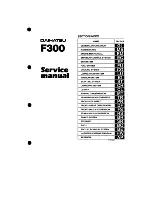
7. Reinstall the valve cap to prevent dirt
from entering. Periodically check the
valve for damage and leaks.
Inspecting and Maintaining Tires
Regularly inspect the tread and side walls for
any sign of distortion (bulges), foreign
objects, cuts or wear.
WARNING:
Do not drive Model S if a
tire is damaged, excessively worn, or
inflated to an incorrect pressure.
Check tires regularly for wear, and
ensure there are no cuts, bulges or
exposure of the ply/cord structure.
Tire Wear
Adequate tread depth is important for proper
tire performance. Tires with a tread depth less
than 3 mm are more likely to hydroplane in
wet conditions and should not be used. Tires
with a tread depth less than 4 mm do not
perform well in snow and slush and should
not be used when driving in winter
conditions.
Model S is originally fitted with tires that have
wear indicators molded into the tread
pattern. When the tread has been worn down
to 3 mm, the indicators start to appear at the
surface of the tread pattern, producing the
effect of a continuous band of rubber across
the width of the tire. For optimal performance
and safety, Tesla recommends replacing tires
before the wear indicators are visible.
Tire Rotation, Balance, and Wheel
Alignment
Tesla recommends rotating the tires every
10,000 km or if tread depth difference is 1.5
mm or greater, whichever comes first.
Unbalanced wheels (sometimes noticeable as
vibration through the steering wheel) affect
vehicle handling and tire life. Even with
regular use, wheels can get out of balance.
Therefore, they should be balanced as
required.
If tire wear is uneven (on one side of the tire
only) or becomes abnormally excessive,
check the alignment of wheels.
NOTE:
When replacing only two tires, install
the new tires on the rear if your vehicle's front
and rear tires are the same size.
Punctured Tires
A puncture eventually causes the tire to lose
pressure, which is why it is important to check
tire pressures frequently. Permanently repair
or replace punctured or damaged tires as
soon as possible.
Your tubeless tires may not leak when
penetrated, provided the object remains in
the tire. If, however, you feel a sudden
vibration or ride disturbance while driving, or
you suspect a tire is damaged, immediately
reduce your speed. Drive slowly, while
avoiding heavy braking or sharp steering and,
when safe to do so, stop the vehicle. Arrange
to have Model S transported to a Tesla
Service Center, or to a nearby tire repair
center.
NOTE:
In some cases, you can temporarily
repair small tire punctures (under 6 mm)
using an optional tire repair kit available from
Tesla. This allows you to slowly drive Model S
to Tesla or to a nearby tire repair facility.
WARNING:
Do not drive with a
punctured tire that has not been
repaired, even if the puncture has not
caused the tire to deflate. A punctured
tire can deflate suddenly at any time.
Flat Spots
If Model S is stationary for a long period, tires
can form flat spots. When Model S is driven,
these flat spots cause a vibration which
gradually disappears as the tires warm up and
regain their original shape.
To minimize flat spots during storage, inflate
tires to the maximum pressure indicated on
the tire wall. Then, before driving, release air
to adjust tire pressure to the recommended
levels.
Improving Tire Mileage
To improve the mileage you get from your
tires, maintain tires at the recommended tire
pressures, observe speed limits and advisory
speeds, and avoid:
• Pulling away quickly, or hard acceleration.
• Fast turns and heavy braking.
Tire Care and Maintenance
181
Maintenance
















































